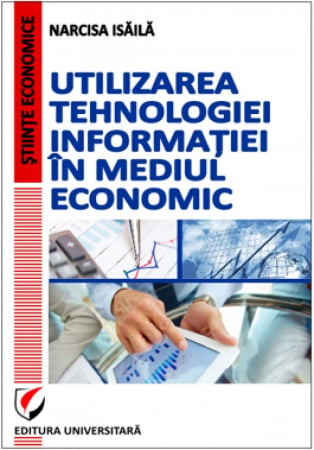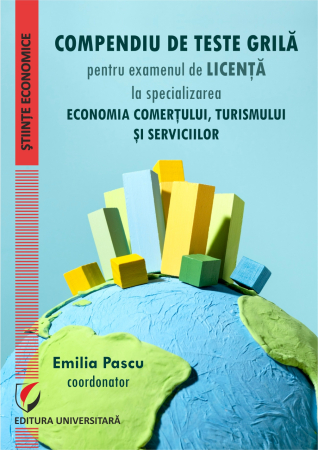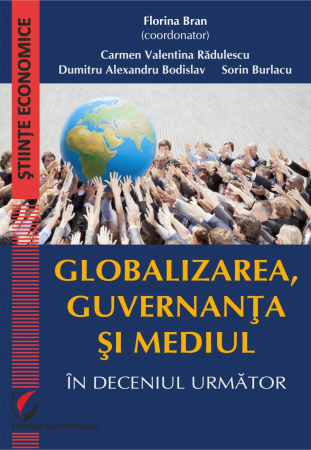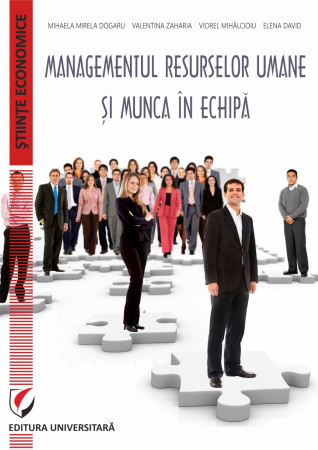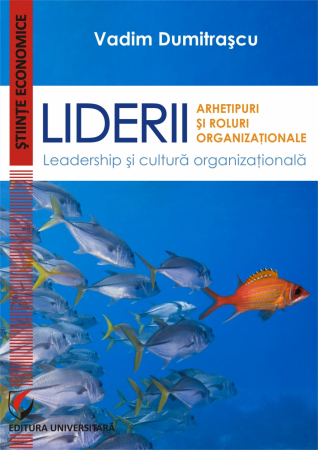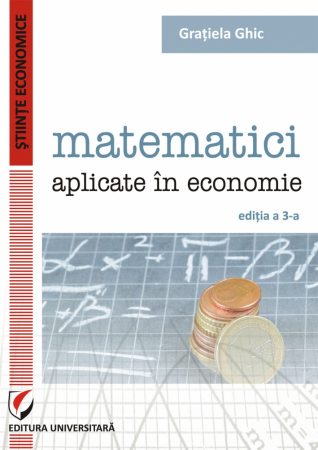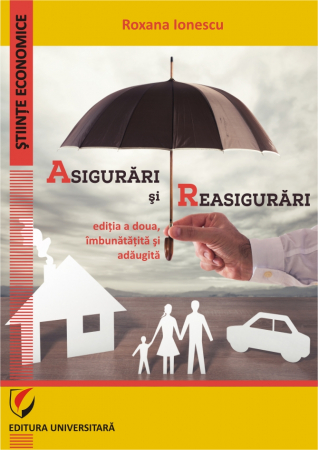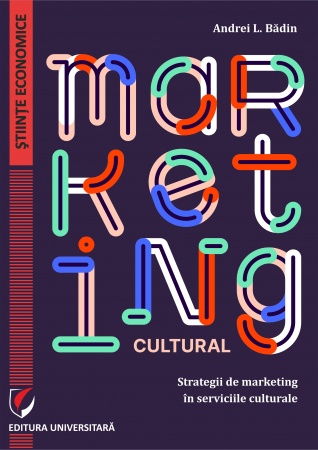Manuscript proposals: [email protected] / 0745 204 115 //// Tracking orders Individuals / Sales: 0745 200 357 / Orders Legal entities: 0721 722 783
Publisher: Editura Universitară
Author: Viorel Mionel
ISBN: 978-606-28-0215-8
DOI: 10.5682/9786062802158
Publisher year: 2015
Edition: I
Pages: 254
Product Code:
9786062802158
Do you need help?
0745 200 357
- Description
- Download (1)
- Authors
- Content
- More details
- Reviews (0)
The strategic nature of resources can change over time as much as the economic nature of certain resources has changed. Here is the difference between resource and wealth. The first term, resource, refers to that natural means that can be used by society to meet needs. And the second, wealth, means a means, not necessarily natural, by which human communities meet their needs. Man is the key element of the resource-wealth relationship. While natural resources exist in the absence of human action, riches do not. They are a result of human action. Somewhat similarly, resources become geostrategic due to the crucial importance that man / states attach to them and may lose their status when their utility decreases. For example, when there is a possibility of substituting them. Also, geostrategic resources can fluctuate. Sometimes they can be spatial, other times they can be revitalized, and in exceptional cases they can be a permanent tool of geopolitical maneuver.
How does this book differ from other books in the field of economic geography? One of the differences is that economic geography is not viewed in its usual womb, but is analyzed in relation to the arena of global politics. Therefore, I tried to make it as easy to follow and understand. In each chapter we have defined the resource treated as comprehensively as possible, but without slipping into the side of unnecessary details. Then, we treated from a spatial point of view the geographical distribution of resources, and where it was the case (for most), their reserves, productions and utility were analyzed. The last sections of each chapter focus on the geopolitical, geoeconomic and geostrategic role of resources. Due to the multitude of aspects that could very well represent so many subjects of analysis, I chose to present only those that had a decisive role in defining resources as geostrategic. Finally, the second difference from other volumes of economic geography is that this book contains a lot of information about the real world. And when I say "world," I mean the world. As will be seen, the information is not limited to one, two or three countries, or to a type of country (for example, rich or poor countries, great powers or regional powers). A large part of the information is in the form of figures: how big are the reserves, how many of the reserves are transformed into productions, who consumes the most and who needs imports, etc. But quantitative information is accompanied by a lot of qualitative information about geographic data, historical contexts, geopolitical strategies and the like. My hope is that, after reading the paper, the reader will be able to say that he has some idea about how economic geography works in the real world.
How does this book differ from other books in the field of economic geography? One of the differences is that economic geography is not viewed in its usual womb, but is analyzed in relation to the arena of global politics. Therefore, I tried to make it as easy to follow and understand. In each chapter we have defined the resource treated as comprehensively as possible, but without slipping into the side of unnecessary details. Then, we treated from a spatial point of view the geographical distribution of resources, and where it was the case (for most), their reserves, productions and utility were analyzed. The last sections of each chapter focus on the geopolitical, geoeconomic and geostrategic role of resources. Due to the multitude of aspects that could very well represent so many subjects of analysis, I chose to present only those that had a decisive role in defining resources as geostrategic. Finally, the second difference from other volumes of economic geography is that this book contains a lot of information about the real world. And when I say "world," I mean the world. As will be seen, the information is not limited to one, two or three countries, or to a type of country (for example, rich or poor countries, great powers or regional powers). A large part of the information is in the form of figures: how big are the reserves, how many of the reserves are transformed into productions, who consumes the most and who needs imports, etc. But quantitative information is accompanied by a lot of qualitative information about geographic data, historical contexts, geopolitical strategies and the like. My hope is that, after reading the paper, the reader will be able to say that he has some idea about how economic geography works in the real world.
-
Resurse geostrategice. Geografia economica in arena politicii globale
Download
VIOREL MIONEL
Department of Tourism and Geography
Faculty of Commerce, Academy of Economic Studies, Bucharest
Department of Tourism and Geography
Faculty of Commerce, Academy of Economic Studies, Bucharest
PROLOG / 9
I. POPULATION - GEOSTRATEGIC RESOURCE OF THE WHOLE HUMANITY / 13
1.1. What is the population? / 13
1.2. Numerical evolution of the population / 15
1.3. The main world geodemographic actors / 21
1.4. Why is population important in international relations? / 24
1.4.1. Geodemography - World Population Conference / 24
1.4.2. Bi and multilateral relations regarding the population / 26
Privileged relations / 26
Migrations: occasion for unrest in relations between states / 28
Diaspora / 30
Population - "fuel" of conflicts / 33
1.4.3. The transcendence of human relations beyond borders / 35
Religion / 35
Panisms / 37
1.5. Population, geoeconomics and geopolitics / 39
1.5.1. Population and geoeconomics / 40
1.5.2. Biopolitics: population and geopolitics / 45
The policy of denationalization and Russification behind the Iron Curtain / 45
Population: object and subject of strategic thinking / 48
Demographic spillover, action with long - term geopolitical effects / 49
Ethnicity as a geopolitical justification / 53
II. COAL, BETWEEN THE ENERGY RESOURCE OF THE PAST AND FUTURE STRATEGIC GAMES / 55
2.1. What is coal? / 55
2.2. Reserves, production, consumption and utility / 57
2.2.1. Geographical distribution of safe reserves / 58
2.2.2. Production and consumption / 60
2.2.3. The utility of coal: China, India and the developing world / 62
2.3. Coal Geopolitics / 64
2.3.1. Coal and steel: close geoeconomic tandem / 64
2.3.2. Coals and environmental agreements / 68
2.3.3. From Mongolia to "Mine-golia". The new Eldorado of coal / 71
2.3.4. The geoeconomic importance of the state coal of the 18,108 islands / 73
2.3.5. Africa's new coal hub: Mozambique / 75
2.3.6. The pro-Westernization of Ukraine passes (and) through Donbas / 77
2.4. What future does coal have? / 80
2.4.1. Economy beats geopolitics / 80
2.4.2. New technologies: underground gasification and coal liquefaction / 83
III. OIL, THE "BLACK GOLD" OF GEOPOLITICS / 86
3.1. What is oil? / 86
3.2. Why is oil important? / 88
3.3. Reserves, production and consumption / 90
3.3.1. Geographical distribution of safe reserves / 92
3.3.2. Production and consumption / 94
3.4. Transport / 96
3.4.1. Matritime transports / 96
3.4.2. Oil pipelines: arteries of the land transport system / 98
3.4.3. Threats to oil transport / 103
Piracy / 103
Terrorism / 105
3.5. Oil-soaked geopolitics / 106
3.5.1. The creation of OPEC and its geopolitical role / 107
3.5.2. Alaska Oil Startup / 112
3.5.3. The Yom Kippur War (1973) and the First Oil Shock / 114
3.5.4. The Iranian Islamic Revolution (1979) and the Second Oil Shock / 116
3.5.5. The First Gulf War (Iraq-Kuwait, 1990-1991) / 119
3.5.6. The Second Gulf War (Iraq, 2003) / 121
3.5.7. Chinese energy insatiable / 124
3.5.8. Geopolitics of cheap oil / 129
IV. NATURAL GASES. THEY CAN'T SEE, BUT THEY FEEL / 133
4.1. What is natural gas? / 133
4.2. Reserves, production and consumption / 135
4.2.1. Geographical distribution of safe reserves / 136
4.2.2. Production and consumption / 138
4.3. Natural gas processing, transport and storage / 141
4.3.1. High pressure gas pipelines / 141
4.3.2. LNG (liquefied natural gas) and maritime transport / 143
4.3.3. Storage / 144
4.4. Natural gas geopolitics and international actors / 146
4.4.1. Russia: the geopolitical hub of Eurasian gas / 146
Gazprom, Russia's new weapon / 147
Belarus: cheap gas against political support / 150
Ukraine: expensive and intermittent gas / 151
Central Asian gas between the Muscovite and Chinese spheres / 155
Russia - Gazprom - gas pipelines / 158
4.4.2. Western countries in the gas equation / 162
Europe and Eurodependence on Russian gas / 162
USA, alternative for Europe / 164
Israel. A future world gas producer? / 166
4.4.3. South and East Asia: here LNG first of all! / 169
4.4.4. Gas Exporting Countries Forum (GECF) / 170
V. METALS (RADIO) ACTIVE IN THE FIELD OF GEORAPHY AND WORLD POLITICS / 173
5.1. What are radioactive metals? / 173
5.1.1. Radiatia / 173
5.1.2. Radioactive metals / 174
5.2. The importance of radioactive metals / 176
5.2.1. Nuclear power plants / 176
5.2.2. Atomic bombs / 178
5.3. Reserves, production and consumption / 180
5.3.1. Uranium / 180
5.3.2. Thorium / 183
5.4. Radioactive metals, between civilian and military purposes / 184
5.4.1. Central Asia, geopolitical uranium sandwich / 185
5.4.2. African uranium: geoeconomic competition and geopolitical risks / 188
5.4.3. USA, Australia, India: my friends' friends are my friends / 192
Australia, India is "cemented" with uranium / 192
USA and India: the thorium relationship / 194
5.4.4. Nuclear ambitions / 195
Iranian nuclear program / 195
North Korea, the newest nuclear power / 198
South Africa or how to give up nuclear ambitions / 200
VI. PRECIOUS METALS / 203
6.1. What and what are precious metals? / 203
6.2. Reserves and productions / 206
6.2.1. Aur / 206
6.2.2. Silver / 209
6.2.3. Platinum metals / 213
6.3. The importance of precious metals / 216
6.4. Precious metals in the international arena / 218
6.4.1. Money / 218
6.4.2. The gold standard / 221
6.4.3. Sovereign gold reserves / 223
6.4.4. Value in times of crisis: precious metals become even more precious / 227
6.4.5. Conflict zones and the global comet / 230
6.4.6. Control smartphone / 233
6.4.7. The petitioning BRICS / 235 relations
6.4.8. A geopolitics of precious metals? / 237
BIBLIOGRAPHY / 240
I. POPULATION - GEOSTRATEGIC RESOURCE OF THE WHOLE HUMANITY / 13
1.1. What is the population? / 13
1.2. Numerical evolution of the population / 15
1.3. The main world geodemographic actors / 21
1.4. Why is population important in international relations? / 24
1.4.1. Geodemography - World Population Conference / 24
1.4.2. Bi and multilateral relations regarding the population / 26
Privileged relations / 26
Migrations: occasion for unrest in relations between states / 28
Diaspora / 30
Population - "fuel" of conflicts / 33
1.4.3. The transcendence of human relations beyond borders / 35
Religion / 35
Panisms / 37
1.5. Population, geoeconomics and geopolitics / 39
1.5.1. Population and geoeconomics / 40
1.5.2. Biopolitics: population and geopolitics / 45
The policy of denationalization and Russification behind the Iron Curtain / 45
Population: object and subject of strategic thinking / 48
Demographic spillover, action with long - term geopolitical effects / 49
Ethnicity as a geopolitical justification / 53
II. COAL, BETWEEN THE ENERGY RESOURCE OF THE PAST AND FUTURE STRATEGIC GAMES / 55
2.1. What is coal? / 55
2.2. Reserves, production, consumption and utility / 57
2.2.1. Geographical distribution of safe reserves / 58
2.2.2. Production and consumption / 60
2.2.3. The utility of coal: China, India and the developing world / 62
2.3. Coal Geopolitics / 64
2.3.1. Coal and steel: close geoeconomic tandem / 64
2.3.2. Coals and environmental agreements / 68
2.3.3. From Mongolia to "Mine-golia". The new Eldorado of coal / 71
2.3.4. The geoeconomic importance of the state coal of the 18,108 islands / 73
2.3.5. Africa's new coal hub: Mozambique / 75
2.3.6. The pro-Westernization of Ukraine passes (and) through Donbas / 77
2.4. What future does coal have? / 80
2.4.1. Economy beats geopolitics / 80
2.4.2. New technologies: underground gasification and coal liquefaction / 83
III. OIL, THE "BLACK GOLD" OF GEOPOLITICS / 86
3.1. What is oil? / 86
3.2. Why is oil important? / 88
3.3. Reserves, production and consumption / 90
3.3.1. Geographical distribution of safe reserves / 92
3.3.2. Production and consumption / 94
3.4. Transport / 96
3.4.1. Matritime transports / 96
3.4.2. Oil pipelines: arteries of the land transport system / 98
3.4.3. Threats to oil transport / 103
Piracy / 103
Terrorism / 105
3.5. Oil-soaked geopolitics / 106
3.5.1. The creation of OPEC and its geopolitical role / 107
3.5.2. Alaska Oil Startup / 112
3.5.3. The Yom Kippur War (1973) and the First Oil Shock / 114
3.5.4. The Iranian Islamic Revolution (1979) and the Second Oil Shock / 116
3.5.5. The First Gulf War (Iraq-Kuwait, 1990-1991) / 119
3.5.6. The Second Gulf War (Iraq, 2003) / 121
3.5.7. Chinese energy insatiable / 124
3.5.8. Geopolitics of cheap oil / 129
IV. NATURAL GASES. THEY CAN'T SEE, BUT THEY FEEL / 133
4.1. What is natural gas? / 133
4.2. Reserves, production and consumption / 135
4.2.1. Geographical distribution of safe reserves / 136
4.2.2. Production and consumption / 138
4.3. Natural gas processing, transport and storage / 141
4.3.1. High pressure gas pipelines / 141
4.3.2. LNG (liquefied natural gas) and maritime transport / 143
4.3.3. Storage / 144
4.4. Natural gas geopolitics and international actors / 146
4.4.1. Russia: the geopolitical hub of Eurasian gas / 146
Gazprom, Russia's new weapon / 147
Belarus: cheap gas against political support / 150
Ukraine: expensive and intermittent gas / 151
Central Asian gas between the Muscovite and Chinese spheres / 155
Russia - Gazprom - gas pipelines / 158
4.4.2. Western countries in the gas equation / 162
Europe and Eurodependence on Russian gas / 162
USA, alternative for Europe / 164
Israel. A future world gas producer? / 166
4.4.3. South and East Asia: here LNG first of all! / 169
4.4.4. Gas Exporting Countries Forum (GECF) / 170
V. METALS (RADIO) ACTIVE IN THE FIELD OF GEORAPHY AND WORLD POLITICS / 173
5.1. What are radioactive metals? / 173
5.1.1. Radiatia / 173
5.1.2. Radioactive metals / 174
5.2. The importance of radioactive metals / 176
5.2.1. Nuclear power plants / 176
5.2.2. Atomic bombs / 178
5.3. Reserves, production and consumption / 180
5.3.1. Uranium / 180
5.3.2. Thorium / 183
5.4. Radioactive metals, between civilian and military purposes / 184
5.4.1. Central Asia, geopolitical uranium sandwich / 185
5.4.2. African uranium: geoeconomic competition and geopolitical risks / 188
5.4.3. USA, Australia, India: my friends' friends are my friends / 192
Australia, India is "cemented" with uranium / 192
USA and India: the thorium relationship / 194
5.4.4. Nuclear ambitions / 195
Iranian nuclear program / 195
North Korea, the newest nuclear power / 198
South Africa or how to give up nuclear ambitions / 200
VI. PRECIOUS METALS / 203
6.1. What and what are precious metals? / 203
6.2. Reserves and productions / 206
6.2.1. Aur / 206
6.2.2. Silver / 209
6.2.3. Platinum metals / 213
6.3. The importance of precious metals / 216
6.4. Precious metals in the international arena / 218
6.4.1. Money / 218
6.4.2. The gold standard / 221
6.4.3. Sovereign gold reserves / 223
6.4.4. Value in times of crisis: precious metals become even more precious / 227
6.4.5. Conflict zones and the global comet / 230
6.4.6. Control smartphone / 233
6.4.7. The petitioning BRICS / 235 relations
6.4.8. A geopolitics of precious metals? / 237
BIBLIOGRAPHY / 240
Why bother with such a study? Why learn what geostrategic resources are and why they are important? Or why aren't people interested in economic geography? There are some legitimate questions we need to answer before reading this book. Well, if you've opened and leafed through this paper at least a little, you probably have at least a passing interest in world economic geography. And you are not alone, many others before have tried to understand and study the geographical distribution of certain resources, in order to elucidate the mystery behind the development or, on the contrary, the underdevelopment of states. It is true that resources, human or natural, do not matter, which does not fully explain the development of states. But it is a good starting point in the analysis of economic development.
Let's go back in history to what Niall Ferguson says about the struggle between civilizations. Leaving aside the wars that have overwhelmingly dominated human history, the struggle between political entities (empires, states, etc.) over time has meant fierce competition for strategic and economic advantages over opponents, in this case a struggle for resources. . Referring indirectly to the economic aspects of competition between political entities, Ferguson wonders what is the real reason for European trade incisiveness in relation to other areas over the past five centuries. Why were Europeans so cheap about money that they were willing to do anything? The answer he gives is purely geographical. Ferguson says that if we look at the map of medieval Europe, on which appears an impressive number of competing states, we will unravel the mystery, which is not a very complicated one. The simplest answer, says the author, is geography. Compared to China - which until the 1500s was much more developed than Europe - Ferguson believes that geography has helped European states to motivate themselves in a competitive spirit and to offer them a naturally increased protection, thanks to accentuated morphological fragmentation. China's geography, much flatter and less fragmented, has given it a character of self-sufficiency that has led to the capping of the Chinese population.
So geography or, as Robert Kaplan says, the position of a state on the map is the first thing that defines it, even more than the philosophy of government that guides it. Obviously, Kaplan includes in the philosophy of government also the economic aspects, since he states that geography represents the preface of the whole chain of human events. Geography is responsible for many realities of international relations, and for this reason, very often, geographical aspects are omitted because they are considered self-evident. However, some economists do not allow us to (more) omit from the equation geography, especially the economic one. They are the ones who put an end to and restore in rights this discipline so important in understanding other aspects of human society. Eugen Ovidiu Chirovici finds a natural explanation regarding the T0 moment of the economy. He states that the opportunity for the development of states lies in relief and in geographical chance, because what we call today as wealth meant, millennia and millennia in a row, land wealth, that is, land. Thus, simplifying Chirovici's argument quite a bit, we arrive at the source of inequity of chances and at what he called T0 moment of the economy, in this case geography.
The three specialists mentioned above, a historian, a journalist in international politics and an economist, admit the importance of geography and natural resources. The morphology of the relief, the position of the states on the political map, the land wealth, the natural resources, all these aspects invoked by the three specialists represent elements of the study of geography. The population makes daily contact with iridescences of the mentioned elements, in various forms, hence the discussion about the geographical chance. However, some influence more than others, and this aspect is even more valid for resources than for the other geographical components. The presence of resources is an advantage, their lack is a handicap. The same is true for each resource. Therefore, some resources are more important than others. For example, if we were to define the society of the present in terms of a resource, then it would have to be one of oil, a civilization created on and influenced by oil.
However, since many other resources have their well-defined role in ordering humanity, it is not at all constructive to reduce reasoning so much. People in postmodern society need oil just as much as they need food, housing, a mobile phone, or clothing. So all the resources! The finished products are made with the help of raw materials, most of them extracted from nature. Which the resource is more important than what, pragmatically speaking, is difficult to say. In the arena of global politics, however, the issues are somewhat clearer. Those resources that have generated geopolitical events are considered to be geostrategic resources. Their importance in a certain period of time, for development or for other political purposes, made them stand out from the range of natural resources. This is the case of fossil mineral fuels or energy resources as they are also known, radioactive metals, precious metals and, why not, the population.
The strategic nature of resources can change over time as much as the economic nature of certain resources has changed. Here is the difference between resource and wealth. The first term, resource, refers to that natural means that can be used by society to meet needs. And the second, wealth, means a means, not necessarily natural, by which human communities meet their needs. Man is the key element of the resource-wealth relationship. While natural resources exist in the absence of human action, riches do not. They are a result of human action. Somewhat similarly, resources become geostrategic due to the crucial importance that man / states attach to them and may lose their status when their utility decreases. For example, when there is a possibility of substituting them. Also, geostrategic resources can fluctuate. Sometimes they can be spatial, other times they can be revitalized, and in exceptional cases they can be a permanent tool of geopolitical maneuver.
How does this book differ from other books in the field of economic geography? One of the differences is that economic geography is not viewed in its usual womb, but is analyzed in relation to the arena of global politics. Therefore, I tried to make it as easy to follow and understand. In each chapter we have defined the resource treated as comprehensively as possible, but without slipping into the side of unnecessary details. Then, we treated from a spatial point of view the geographical distribution of resources, and where it was the case (for most), their reserves, productions and utility were analyzed. The last sections of each chapter focus on the geopolitical, geoeconomic and geostrategic role of resources. Due to the multitude of aspects that could very well represent so many subjects of analysis, I chose to present only those that had a decisive role in defining resources as geostrategic. Finally, the second difference from other volumes of economic geography is that this book contains a lot of information about the real world. And when I say "world," I mean the world. As will be seen, the information is not limited to one, two or three countries, or to a type of country (for example, rich or poor countries, great powers or regional powers). A large part of the information is in the form of figures: how big are the reserves, how many of the reserves are transformed into productions, who consumes the most and who needs imports, etc. But quantitative information is accompanied by a lot of qualitative information about geographic data, historical contexts, geopolitical strategies and the like. My hope is that, after reading the paper, the reader will be able to say that he has some idea about how economic geography works in the real world.
My last hope is also connected to the last idea. That most of those who will say that they have not only an idea, but more, about economic geography and its relationship with international politics, will be my students and masters, to whom this book is dedicated. The structuring of the paper in this way was thought not only in a methodical spirit, but also to make it easier to understand the topics approached.
The Author
Let's go back in history to what Niall Ferguson says about the struggle between civilizations. Leaving aside the wars that have overwhelmingly dominated human history, the struggle between political entities (empires, states, etc.) over time has meant fierce competition for strategic and economic advantages over opponents, in this case a struggle for resources. . Referring indirectly to the economic aspects of competition between political entities, Ferguson wonders what is the real reason for European trade incisiveness in relation to other areas over the past five centuries. Why were Europeans so cheap about money that they were willing to do anything? The answer he gives is purely geographical. Ferguson says that if we look at the map of medieval Europe, on which appears an impressive number of competing states, we will unravel the mystery, which is not a very complicated one. The simplest answer, says the author, is geography. Compared to China - which until the 1500s was much more developed than Europe - Ferguson believes that geography has helped European states to motivate themselves in a competitive spirit and to offer them a naturally increased protection, thanks to accentuated morphological fragmentation. China's geography, much flatter and less fragmented, has given it a character of self-sufficiency that has led to the capping of the Chinese population.
So geography or, as Robert Kaplan says, the position of a state on the map is the first thing that defines it, even more than the philosophy of government that guides it. Obviously, Kaplan includes in the philosophy of government also the economic aspects, since he states that geography represents the preface of the whole chain of human events. Geography is responsible for many realities of international relations, and for this reason, very often, geographical aspects are omitted because they are considered self-evident. However, some economists do not allow us to (more) omit from the equation geography, especially the economic one. They are the ones who put an end to and restore in rights this discipline so important in understanding other aspects of human society. Eugen Ovidiu Chirovici finds a natural explanation regarding the T0 moment of the economy. He states that the opportunity for the development of states lies in relief and in geographical chance, because what we call today as wealth meant, millennia and millennia in a row, land wealth, that is, land. Thus, simplifying Chirovici's argument quite a bit, we arrive at the source of inequity of chances and at what he called T0 moment of the economy, in this case geography.
The three specialists mentioned above, a historian, a journalist in international politics and an economist, admit the importance of geography and natural resources. The morphology of the relief, the position of the states on the political map, the land wealth, the natural resources, all these aspects invoked by the three specialists represent elements of the study of geography. The population makes daily contact with iridescences of the mentioned elements, in various forms, hence the discussion about the geographical chance. However, some influence more than others, and this aspect is even more valid for resources than for the other geographical components. The presence of resources is an advantage, their lack is a handicap. The same is true for each resource. Therefore, some resources are more important than others. For example, if we were to define the society of the present in terms of a resource, then it would have to be one of oil, a civilization created on and influenced by oil.
However, since many other resources have their well-defined role in ordering humanity, it is not at all constructive to reduce reasoning so much. People in postmodern society need oil just as much as they need food, housing, a mobile phone, or clothing. So all the resources! The finished products are made with the help of raw materials, most of them extracted from nature. Which the resource is more important than what, pragmatically speaking, is difficult to say. In the arena of global politics, however, the issues are somewhat clearer. Those resources that have generated geopolitical events are considered to be geostrategic resources. Their importance in a certain period of time, for development or for other political purposes, made them stand out from the range of natural resources. This is the case of fossil mineral fuels or energy resources as they are also known, radioactive metals, precious metals and, why not, the population.
The strategic nature of resources can change over time as much as the economic nature of certain resources has changed. Here is the difference between resource and wealth. The first term, resource, refers to that natural means that can be used by society to meet needs. And the second, wealth, means a means, not necessarily natural, by which human communities meet their needs. Man is the key element of the resource-wealth relationship. While natural resources exist in the absence of human action, riches do not. They are a result of human action. Somewhat similarly, resources become geostrategic due to the crucial importance that man / states attach to them and may lose their status when their utility decreases. For example, when there is a possibility of substituting them. Also, geostrategic resources can fluctuate. Sometimes they can be spatial, other times they can be revitalized, and in exceptional cases they can be a permanent tool of geopolitical maneuver.
How does this book differ from other books in the field of economic geography? One of the differences is that economic geography is not viewed in its usual womb, but is analyzed in relation to the arena of global politics. Therefore, I tried to make it as easy to follow and understand. In each chapter we have defined the resource treated as comprehensively as possible, but without slipping into the side of unnecessary details. Then, we treated from a spatial point of view the geographical distribution of resources, and where it was the case (for most), their reserves, productions and utility were analyzed. The last sections of each chapter focus on the geopolitical, geoeconomic and geostrategic role of resources. Due to the multitude of aspects that could very well represent so many subjects of analysis, I chose to present only those that had a decisive role in defining resources as geostrategic. Finally, the second difference from other volumes of economic geography is that this book contains a lot of information about the real world. And when I say "world," I mean the world. As will be seen, the information is not limited to one, two or three countries, or to a type of country (for example, rich or poor countries, great powers or regional powers). A large part of the information is in the form of figures: how big are the reserves, how many of the reserves are transformed into productions, who consumes the most and who needs imports, etc. But quantitative information is accompanied by a lot of qualitative information about geographic data, historical contexts, geopolitical strategies and the like. My hope is that, after reading the paper, the reader will be able to say that he has some idea about how economic geography works in the real world.
My last hope is also connected to the last idea. That most of those who will say that they have not only an idea, but more, about economic geography and its relationship with international politics, will be my students and masters, to whom this book is dedicated. The structuring of the paper in this way was thought not only in a methodical spirit, but also to make it easier to understand the topics approached.
The Author
If you want to express your opinion about this product you can add a review.
write a review

6359.png)
![Geostrategic Resources. Economic Geography in the Arena of Global Politics [1] Geostrategic Resources. Economic Geography in the Arena of Global Politics [1]](https://gomagcdn.ro/domains/editurauniversitara.ro/files/product/large/resurse-geostrategice-geografia-economica-in-arena-politicii-globale-802-885071.jpg)

